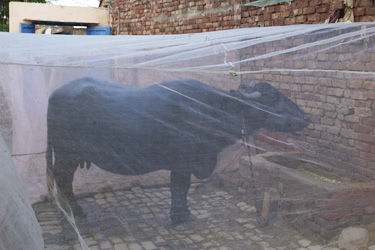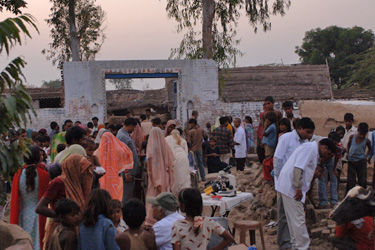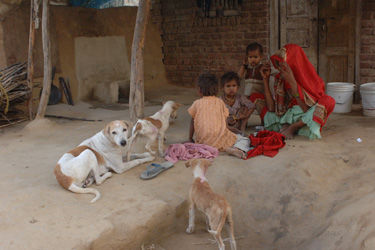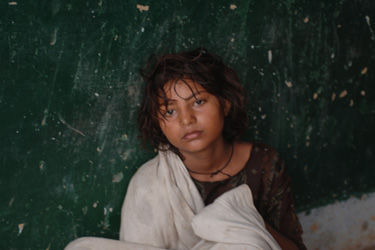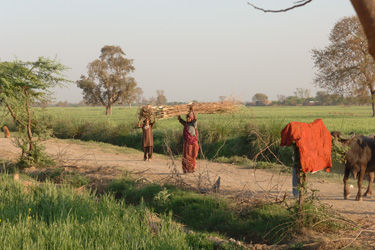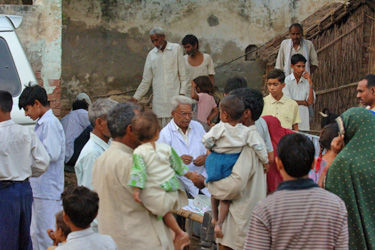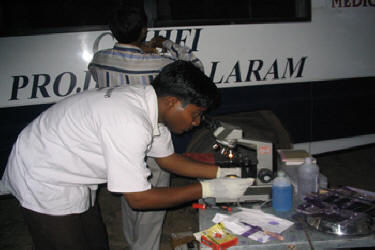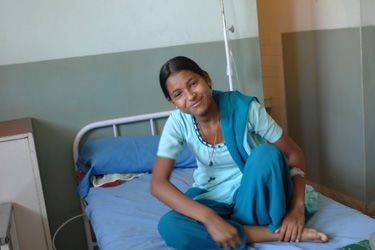Malaria Control Program
Project - Balaram
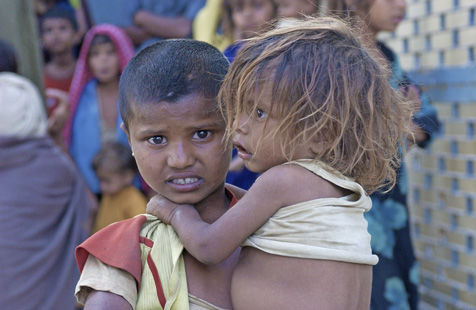
This child was 3 years old in this photo and had never walked due to extreme weakness from chronic malaria. After treatment, the village was astonished to find the child standing and walking. It was thought that the child would never walk in his life.
Malaria Control
We have not been very successful in controlling malaria with the distribution of treated bed nets. Some of the problems have been:
- Mosquitoes get trapped inside the bed nets, and people prefer the traditional custom of tucking their bed sheet under their body from head to toe to prevent mosquito bites while sleeping.
- We find people sew the mosquito nets together and use them to cover their animals.
- When we arranged the nets over the window and doors, it still did not make a noticeable difference, as they are out doing chores and prefer to burn cow dung during the time mosquitoes are out.
The program that has been much more successful in controlling malaria has been the use of monoclonal antibody rapid malaria tests for early identification diagnosis and treatment of the infected patients so that they are not a reservoir and prophylactically treat the rest of the villagers during the malaria season.
PHOTOS
Both photos in the second row were taken during a severe outbreak of malaria. There were many deaths due to Falciparum malaria.
The first photo in row 3 was of the children and mother who had just lost their father/husband. As I stood there, they only had 3 pieces of flat bread for the family. The mother was explaining to the children that their father had died and that they must share the tiny bit of food that they had with the dogs, as now the dogs would be there to protect them since their father had died.
